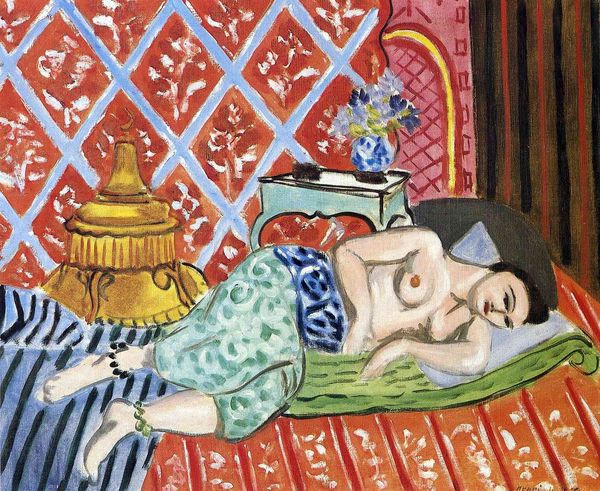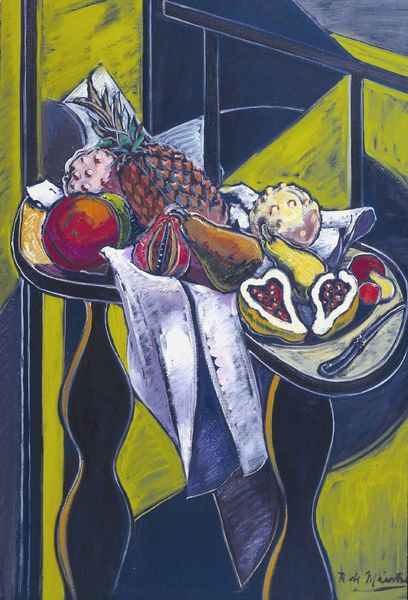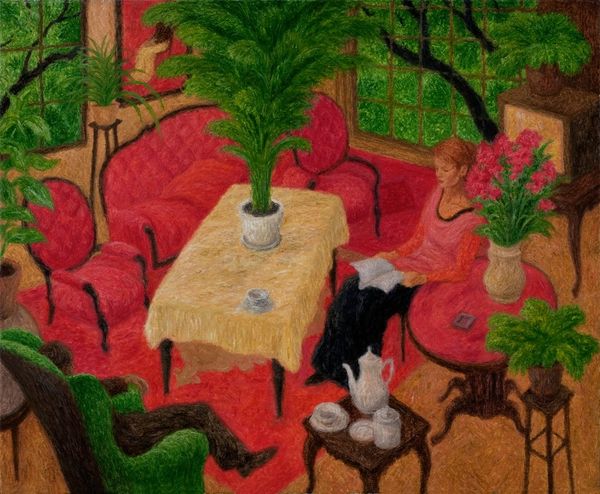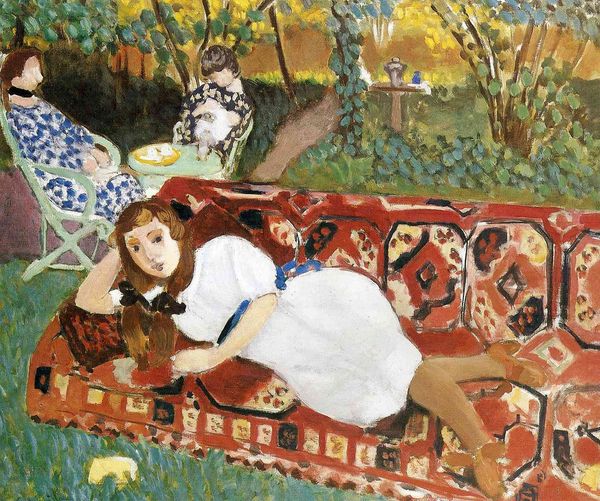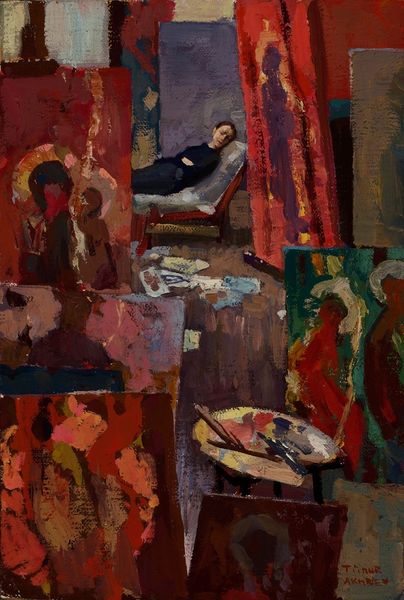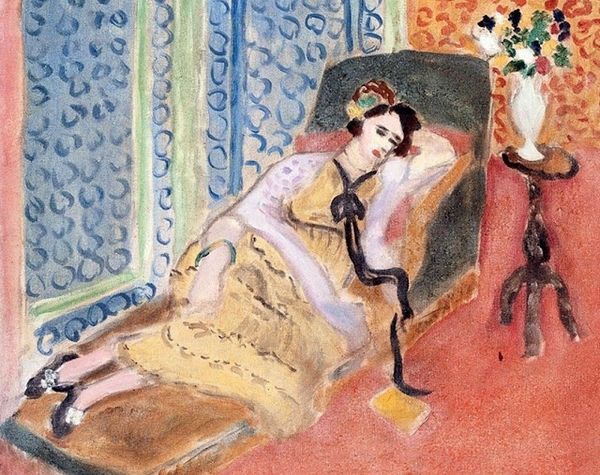
Portrait of director Vsevolod Emilievich Meyerhold 1938
0:00
0:00
Dimensions: 233 x 212 cm
Copyright: Pyotr Konchalovsky,Fair Use
Curator: Here we have Pyotr Konchalovsky's 1938 portrait of the celebrated Soviet theatre director, Vsevolod Meyerhold. He's captured lounging in a vividly patterned interior. What strikes you initially? Editor: The overwhelming sense of confinement. Meyerhold is practically swallowed by the ornamentation. It’s visually vibrant, but also feels a little suffocating, like a gilded cage. Curator: Konchalovsky painted this during a tumultuous period in Soviet history, the height of Stalin's purges. Meyerhold himself was under increasing scrutiny for his avant-garde theatre. That visual compression might be more than just stylistic. Editor: Precisely. Look at the detail of the dog, loyal and at his master's feet. The animal appears vigilant, a possible reference to impending dangers facing its owner. There's a weariness in Meyerhold's expression despite the surrounding vibrancy, which speaks to the complexities of the Soviet artist at the time. Curator: It’s fascinating to consider Meyerhold’s own aesthetic leanings at the time. He was dedicated to experimental theatre and to constructivism. What's so powerful here is Konchalovsky's depiction of a public persona, perhaps wearying behind this colorful scene, within a regime increasingly hostile to innovation. The interior suggests both richness and entrapment. Editor: Absolutely, the domestic scene and trappings are there but one gets the impression of a final moment, or still-life setup. I wonder if that patterned background serves to obfuscate what is really occurring or not said within Soviet art circles, a sort of masking of what's coming down the line. Curator: That's a powerful reading. Considering the suppression of artistic expression during that era, and Meyerhold's own tragic fate shortly after this portrait was created, the work takes on an almost prophetic quality. Editor: I agree. It is more than a portrait; it is a haunting premonition. Reflecting on the artwork through today’s lens reinforces that vigilance in viewing artworks tied to cultural and political suppression remains critical. Curator: It invites us to see beyond the surface and contemplate the unsaid realities of Soviet artistic and intellectual life at the time.
Comments
No comments
Be the first to comment and join the conversation on the ultimate creative platform.
